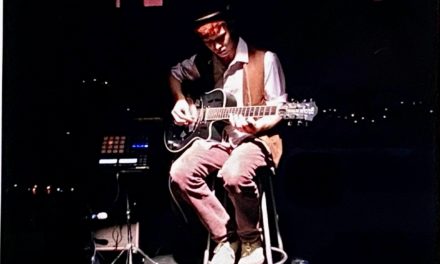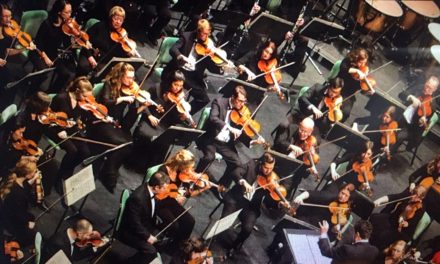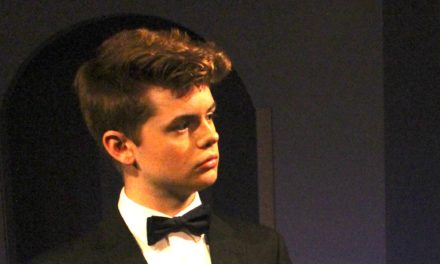By Daniel Buckwalter (#commonmanatthesymphony)
Valentine’s night brought a touch of love in the style of the Americas to a packed house at the Hult Center’s Silva Concert Hall, courtesy of the Eugene Symphony Orchestra.
There was Samuel Barber’s Symphony No. 1 in One Movement (1936), George Gershwin’s Rhapsody in Blue and Second Rhapsody for Piano and Orchestra (1924 and 1931, respectively) as well as Silvestre Revueltas’ “Musica para charlar from Ferrocariles de Baja California” (1936).
Unexpectedly, the whole production came to a screeching halt midway through the opening Barber symphony when a woman somewhere in the rear orchestra was heard yelling — twice — “Is there a doctor in the house?”
That question, shouted above the waves of a symphony in progress, would freeze just about anybody. It certainly stopped guest conductor Teddy Abrams in mid-measure. The performance was uppermost in his mind, I’m sure, because the look on his face seemed to say, “Did I just hear that?” He did. House lights came on. Ushers rushed to the area. A man (presumably a doctor) walked over.
Abrams, who is music director of the Louisville Symphony and also music director and conductor of the Britt Festival Orchestra in southern Oregon, observed the situation from the podium and then wisely, I think, exited the stage
This brought to mind a couple of questions. First, has anything like this happened before? No, according several long time patrons questioned afterward. Secondly, what is protocol for medical emergencies? No one was certain
In this case, however, an elderly man eventually walked toward the exit, leaning on another man. Abrams came back out and asked if everything was fine. Assured that all was well, he and the symphony picked up almost exactly where they had left off. Everyone on stage kept their composure.
As with almost anything regarding classical music, I came to hear Samuel Barber for the first time fairly late in life, as in the final scenes of the movie Platoon and the gorgeous Adagio for Strings
Barber was a two-time Pulitzer Prize winner for music, though, and I have read and heard of music directors throughout the United States clamoring to get more of his works performed. The lush and beautiful sounds of Symphony No. 1 are reason enough to want to hear more of Barber’s work on concert stages.
Skipping ahead to Revueltas, I was struck by the Mexican-born composer’s earthiness. From Construction of the Railroad to The Desert, I had the feeling I was standing in his moment. To me, this is the highest compliment I can think of for a writer or composer. Revueltas moved me to 1930s Mexico.
The highlight of this concert for me, though, was Gershwin’s rhapsodies, with guest pianist Pallavi Mahidhara. The Second Rhapsody for Piano, played before intermission, is seldom heard. Indeed, it was performed Thursday night for the first time in the Eugene Symphony’s 50-plus-year history.
It was a perfect complement to the night’s finale, Rhapsody in Blue. Along with Michael Anderson helping lead the way on clarinet and delicate play by trumpeter James Smock, Mahidhara owned the keyboard as she delivered this classic, her hands nimbly racing side-by-side or crossing over each other.
She amply earned the ovation and curtain call on this musically exquisite night. The evening definitely ended on a high note.
Next up for the Eugene Symphony is a concert titled “Doctor Atomic & Brahms,” to be performed at the Hult Center at 7:30 p.m. on March 21.








